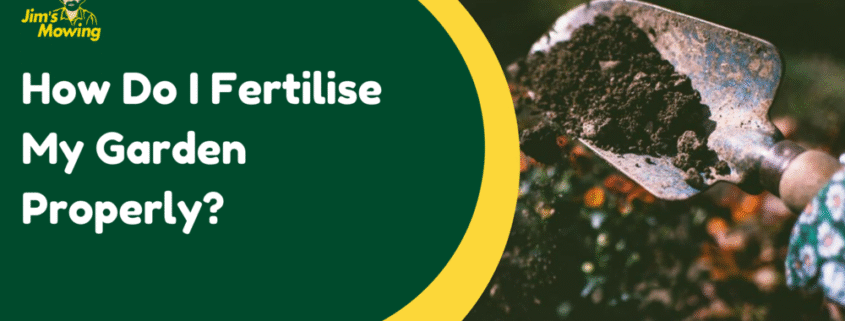How Do I Fertilise My Garden Properly?
Fertilising your garden may sound straightforward, but doing it properly can be the difference between a lush, thriving garden and one that struggles to grow. Whether you’re nurturing a vegetable patch, tending to flower beds, or maintaining a healthy lawn, understanding the right way to fertilise is key. Here’s a comprehensive gardening guide to help New Zealand homeowners fertilise their gardens with confidence.

Why Fertilise at All?
New Zealand soils vary greatly depending on where you live. Some areas have rich, volcanic soils (like in the Bay of Plenty), while others may be sandy or clay-heavy. Even the most fertile soils can become depleted of nutrients over time due to plant growth, weather, and watering.
Fertilisers replenish essential nutrients, helping your plants:
- Grow stronger and faster
- Produce more flowers or fruit
- Resist pests and diseases
- Survive dry spells or seasonal changes
Step-by-Step Guide to Proper Garden Fertilising
1. Know What You’re Growing
Different plants need different nutrients. For example:
- Lawns thrive on nitrogen (N) for green growth.
- Fruit and vegetable plants often need phosphorus (P) and potassium (K) for strong roots and fruit production.
- Flowering plants benefit from a balanced fertiliser or a bloom-boosting formula.
Read the label on your fertiliser to see which plants it suits best.
2. Understand Your Soil
Before applying fertiliser, it’s helpful to know your soil type and current nutrient levels. You can:
- DIY soil test kits – Available at most garden centres.
- Professional testing – If you’re serious about gardening, sending a sample to a lab is a great investment.
This step ensures you don’t over-fertilise, which can harm plants or contaminate waterways.

3. Choose the Right Fertiliser
There are three main types of fertilisers used by Kiwi gardeners:
➤ Granular (Slow-Release) Fertilisers
- Great for long-term feeding.
- Ideal for trees, shrubs, and lawns.
- Apply every 2–3 months.
➤ Liquid Fertilisers
- Fast-acting, perfect for quick nutrient boosts.
- Best for vegetables, herbs, and container plants.
- Apply every 1–2 weeks during the growing season.
➤ Organic Fertilisers
- Includes compost, manure, blood & bone, seaweed solutions.
- Improves soil health over time.
- Gentle on plants and great for eco-conscious gardeners.
👉 Tip: Many New Zealand gardeners use a mix of synthetic and organic fertilisers for best results.

4. Follow the Right Timing
Fertilising is best done when plants are actively growing. In New Zealand, that usually means:
- Spring – The prime time for almost everything: lawns, flowers, veggies.
- Summer – Continue feeding flowering plants and veggies.
- Autumn – Apply a final feed to strengthen roots before winter.
- Winter – Avoid fertilising unless you’re planting cool-season veggies or winter lawns.
5. Use the Correct Application Method
How you apply fertiliser matters:
- Granular fertilisers – Sprinkle around the base of plants or use a spreader for lawns. Water in well.
- Liquid fertilisers – Mix with water and apply using a watering can or spray.
- Compost/manure – Work into the top layer of soil or mulch over garden beds.
🚫 Avoid over-fertilising. More is not better—it can burn plants or lead to weak, leggy growth.
6. Water Wisely
Fertilisers need water to be absorbed by the roots. Always:
- Water after applying granular fertiliser.
- Avoid fertilising during droughts unless you can water regularly.
- Don’t fertilise before heavy rain—it can wash away the nutrients.
Common Mistakes to Avoid
❌ Using the wrong fertiliser for the plant
❌ Applying too much too often
❌ Fertilising when the soil is dry or plants are stressed
❌ Forgetting to water after application
❌ Neglecting soil health—fertiliser is a supplement, not a cure
A Word on Sustainability
In New Zealand, runoff from excess fertiliser can affect our rivers and lakes. Always:
- Follow label directions carefully
- Store fertilisers in a dry, sealed container
- Use organic options where possible
- Compost your food and garden waste—it makes fantastic fertiliser
Final Thoughts
Fertilising your garden properly doesn’t require a degree in soil science—just a bit of know-how, the right tools, and attention to your plants’ needs. Whether you’re growing a vibrant flower garden in Christchurch or a productive veggie patch in Auckland, feeding your plants well will reward you with beauty, flavour, and satisfaction year-round.
If you’re unsure where to start, or simply don’t have the time, Jim’s Mowing NZ is here to help. Our professional gardening services include fertilising, weeding, pruning, and full garden maintenance—so you can enjoy a healthy, stunning garden without the stress.
Call us today at 0800 454 654 for a free quote and let your garden thrive with the help of Jim’s local experts.






